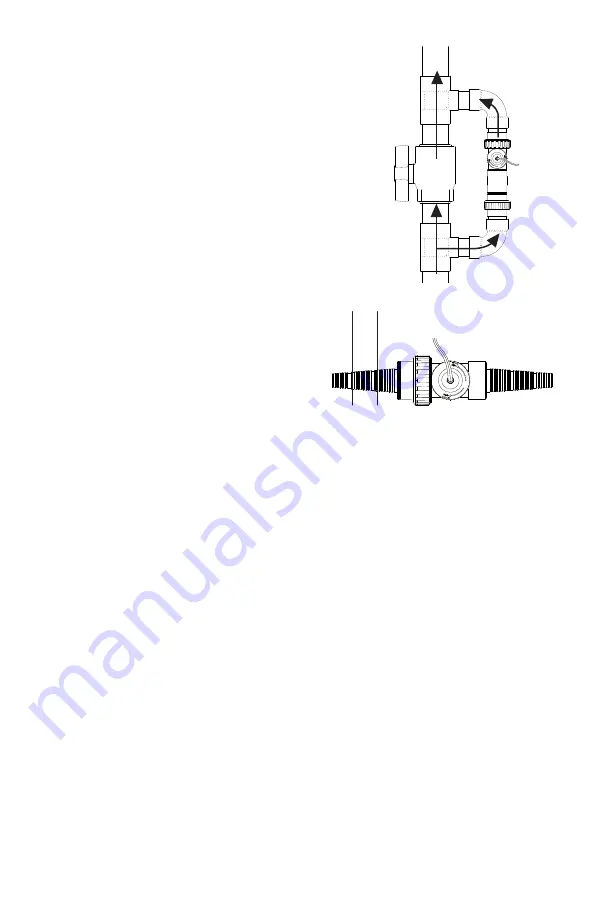
Inline Installation:
The Triton Ionizer can be easily retrofitted to any
existing water feature with rigid PVC, flexible PVC or
kink-free tubing feed line. If the Ionizer is installed
outside the pump vault or skimmer, an irrigation
valve box should be used to provide access for
routine maintenance.
If the Ionizer is to be installed into a rigid or flex PVC
feed line, the use of a 2” union or rubber coupling
on the spigot end of the electrode housing is
recommended. This will allow the electrode housing
to be fully removed for inspection, winterization or
replacement without further alterations to the
plumbing. PVC reducing fittings can be used for
connection to PVC feed lines smaller than 2”
in diameter.
For installation in PVC feed lines greater than 2”
diameter, the use of a plumbing bypass is
recommended. This plumbing configuration
allows some of the water flow to be diverted through
the electrode housing without causing additional
backpressure to the pump. (Figure 5)
An insert step fitting for connection to 1”, 1¼” or
1½” kink-free tubing is supplied with the Triton
Ionizer. Attach the step fitting to the electrode
housing using PVC glue and cleaner to make
the connection. Install the Ionizer and secure the tubing with stainless steel hose clamps
(not included). If using 1¼” or 1½” tubing, the insert fitting will need to be trimmed to provide
the proper outlet diameter for maximum water flow. Use a hacksaw or PVC saw to cut off
smaller, unneeded inset steps at the cut lines indicated below. (Figure 6)
Operation
The Triton Ionizer must have water flowing through the electrode housing at all times when
the unit is turned on. During operation, ions jump from one electrode to the other and are
swept away by the flowing water. The Control Panel reverses polarity regularly to ensure
even consumption of the electrodes.
Operating the Ionizer without a strong flow of water across the electrodes will allow the
ions to simply jump across to the opposite electrode instead of being carried into the water
feature. This “short-circuiting” of the distribution of ions results in excessive corrosion of the
electrodes and insufficient treatment of the water. Turn power off to the Ionizer any time
that power to the pump is turned off. The control panel will return to the previous level of
ionization when power is restored.
• Turn on the pump and plug in the outdoor transformer.
• Program the level of ionization. To enter the program mode, depress and hold the +
or – button on the front of the control panel for 3 seconds or until the number display
begins flashing. Use the + and – buttons to raise and lower the level of ionization. The
control panel will exit the program mode automatically once adjustments are complete.
• Monitor copper levels using the supplied test strips over a period of days. Once copper
the control panel.
Caution: Copper levels above 0.3ppm can be harmful to aquatic life.
TRION-TS test strips supplied with the Triton Ionizer are vacuumed packed with a shelf
life of 2 years. The manufacture date is printed on the lid of the bottle. Replace expired
test strips for accurate results.
4
CUT LINE
1”
1¼”
1½”
Figure 6
Figure 5






















